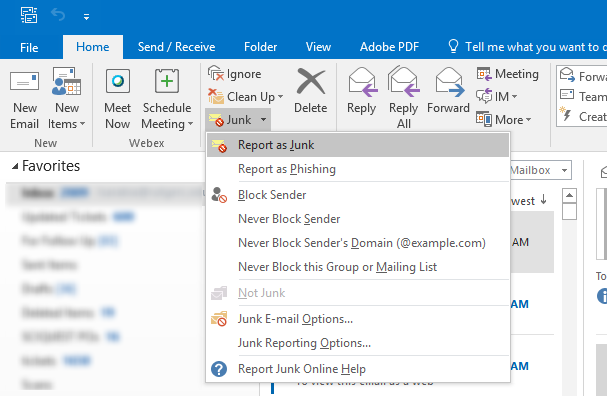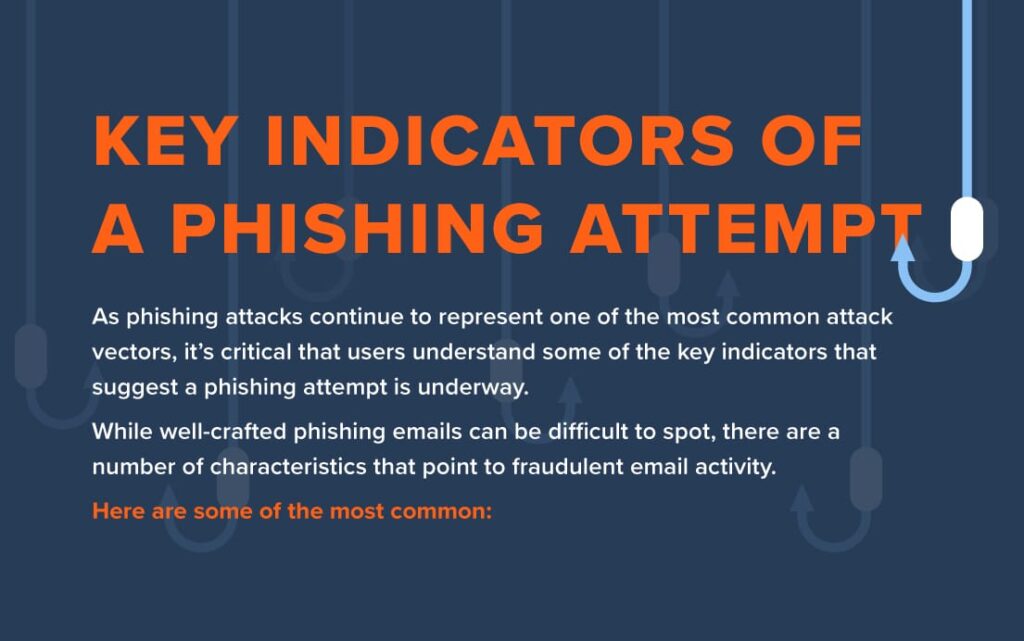
In the world of cybersecurity, social engineering can be a powerful tool used by cyber criminals to breach an organization’s security defenses. In today’s digital age, technology users are particularly vulnerable to social engineering and other cyber attacks, including phishing, ransomware, and malware. To help protect yourself and your organization, it’s crucial to understand the common types of social engineering and cyber attacks, and how to handle them effectively. This article will provide an overview of social engineering and how users of technology can cope with the threat. It will cover the basics of social engineering, why technology users are vulnerable to social engineering, how technology users can protect themselves from social engineering, and common types of social engineering and cyber attacks, such as phishing, ransomware and other cybersecurity threats. With the right knowledge and approach, users of technology can help protect themselves and their organizations from the damaging effects of social engineering.
What is Social Engineering?
Social engineering is one of the most common cyber attacks that the Internet and technology users are facing. It involves manipulating people into providing personal information or access to a vulnerable system, usually through deceptive means. As such, it is essential for all users of technology to understand the dangers of social engineering and how to cope with it.
Social engineers often use techniques such as phishing, spear-phishing, vishing, and smishing. Phishing involves sending emails or texts that contain malicious links or attachments. Spear-phishing targets specific individuals or organizations with emails or text messages. Vishing is a form of social engineering that uses voice calls to extract information from the victim. Smishing is a form of social engineering that uses text messages rather than emails to target the victim.
Users of technology need to be aware of the dangers of these techniques and be aware of the potential risks associated with them. It is important to always verify the authenticity of any emails, texts, or calls that may be received before providing any personal information or access to any systems.
Another form of social engineering is ransomware. Ransomware is malware that is installed on a system and encrypts all of the data stored on it until the user pays a fee. Once a user pays the ransom, they can regain access to their system, but it is not guaranteed. It is important to keep all systems up to date with the latest security updates and be sure to back up any important data to an external drive or cloud storage.
Users of technology can also take steps to protect themselves from social engineering attacks by being aware of the risks, verifying the authenticity of emails, texts, and calls, and keeping their systems up to date and backed up. By doing so, they can help protect themselves from social engineering attacks and reduce the risk of a successful cyber attack.
Why Technology Users are Vulnerable to Social Engineering?
Technology users have become more vulnerable to social engineering attacks as the world has become increasingly reliant on technology and the internet. With the rise of digital devices and internet usage, cybercriminals have found new and more sophisticated ways to attack and exploit users of technology. Social engineering is one of the most common types of cyberattacks, which rely on psychological manipulation to gain access to confidential or sensitive information. This type of attack is used by hackers to gain unauthorized access to networks, systems, and data. As a result, understanding how to protect against social engineering is an important part of overall cybersecurity.
Social engineering attacks typically begin with the attacker attempting to gain the trust of the victim. This is commonly done through emails, text messages, or other forms of communication, in order to gain access to confidential information. For example, attackers may use spoofed emails or fake websites to convince the victim to provide their credentials, or they may try to convince the victim to download malicious software. In addition, attackers may use social media to gain access to personal information, such as contact information or account information.
In order to protect against social engineering attacks, it is important for users of technology to be aware of common tactics used by attackers. For example, users should be suspicious of any unexpected emails or messages, and should not provide personal information unless they are sure the request is legitimate. Additionally, users should look out for phishing emails, which often contain suspicious links or attachments. Finally, users should make sure to keep their software and operating systems up to date in order to protect against the latest security threats.
In addition to being aware of common tactics used by attackers, users can also take steps to further improve their cybersecurity. For instance, users should use strong passwords and change them regularly. They should also enable two-factor authentication to add an extra layer of security to their accounts. Additionally, users should use a secure network connection whenever possible and make sure to only access sensitive information on trusted networks. Finally, users should create regular backups of their data in order to protect against potential ransomware attacks.
Overall, users of technology are vulnerable to social engineering attacks, but there are steps they can take to protect themselves. By being aware of common tactics used by attackers and taking steps to further improve their cybersecurity, users can better protect their confidential information from potential cyber threats.
How Can Technology Users Protect Themselves from Social Engineering?

With the development of technology, cybercrimes such as Social Engineering have become an increasing threat to users, who need to take steps to protect themselves from this malicious tactic. In this article, we will discuss how users of technology can cope with Social Engineering, as well as provide examples and supporting information.
Social Engineering is a type of cyber attack that targets the human factor. Cybercriminals use techniques like phishing, vishing and smishing to trick users into providing personal or financial information, or to get access to their devices. To protect themselves from such attacks, users should keep their devices up to date, ensure their software and anti-virus programs are up-to-date, and be aware of the latest security threats. It is also important to have strong passwords and two-factor authentication in place. Furthermore, users should be careful when opening emails and attachments, and when clicking on suspicious links.
In addition to keeping their systems and accounts secure, users should also be aware of the latest scams and cyber threats. They should be aware of the signs of social enginneering, such as unsolicited emails and requests or calls from individuals claiming to be from their bank or other financial institution. It is also important to be wary of any request to provide personal information or any offers that seem too good to be true.
If users experience a cyber attack, they should report it to their local law enforcement as soon as possible. They should also be prepared for cyber emergencies, such as ransomware attacks, by backing up their data and being prepared to pay the ransoms if necessary.
Finally, users should educate themselves on cybersecurity and stay up-to-date with the latest developments in the field. They should also be aware of their rights and the legal recourse available to them in the case of a cyber incident.
Overall, users of technology can protect themselves against social engineering by taking steps to secure their systems and accounts, being aware of the latest scams and cyber threats, and understanding their rights and legal recourse. By following these steps, users can ensure that they are well-protected from the dangers of cybercrime.
Common Types of Social Engineering and Cyber Attacks
With the world becoming increasingly connected, it is now more important than ever for users of technology to understand the different types of social engineering and cyber attacks that exist. Being aware of and understanding these techniques is the first step towards protecting yourself, your data, and your accounts. In this blog, we’ll discuss the most common types of social engineering and cyber attacks and how users of technology can cope in order to protect themselves.
One of the most common types of social engineering is phishing. This is when attackers send malicious messages, posing as a legitimate source, and try to get users to provide personal information or click a malicious link. Phishing attacks are particularly dangerous because they often appear to be coming from a trusted source, such as a bank or a company. The best way to protect yourself from these attacks is to be aware of the signs and to never click on links or provide information if you are unsure about the source.
Another type of social engineering attack is called ransomware. This is when attackers gain access to a user’s system and encrypt all of their data, demanding a ransom in exchange for the data to be decrypted. Ransomware can be devastating for individuals and businesses, as it can lead to data loss and lost productivity. To protect yourself from ransomware attacks, it is important to have strong passwords and to keep your systems updated with the latest security patches.
A third type of social engineering attack is called spoofing. This is when attackers attempt to gain access to a user’s system by disguising themselves as a legitimate user. Spoofing attacks can be used to gain access to sensitive information, such as banking details and passwords. The best way to protect yourself from this type of attack is to use two-factor authentication and to be wary of emails that seem suspicious or out of the ordinary.
Finally, another type of social engineering attack is called social media fraud. This is when attackers attempt to gain access to a user’s social media accounts by sending malicious messages or links. This can be used to gain access to sensitive information, such as banking details and passwords. To protect yourself from this type of attack, it is important to be aware of the signs, such as messages that seem too good to be true, and to never click on suspicious links.
In conclusion, it is important for users of technology to understand the different types of social engineering and cyber attacks that exist. By being aware of the signs and taking appropriate steps to protect yourself, you can help to protect yourself, your data, and your accounts.
Handling Phishing Attacks, Ransomware and Other Cybersecurity Threats
In the modern world, technology plays an increasingly important role in our day-to-day lives. Unfortunately, this also means that its users are increasingly vulnerable to cybersecurity threats such as phishing attacks, ransomware, and other malicious cyber activities. Fortunately, there are ways for users to cope with these threats, and one of the most effective methods is to understand and be able to recognize social engineering.
Social engineering is a form of cyber attack that uses psychological manipulation to trick users into exposing confidential information or performing an action that benefits the attacker. It can be used to gain access to an organization’s systems or to get individuals to part with their money. It is important for users of technology to understand how social engineering works so that they can recognize and take steps to protect themselves and their organizations from it.
One of the most common forms of social engineering is phishing. Phishing is an attempt to acquire sensitive information or data, such as usernames and passwords, by sending messages that appear to come from a legitimate source. Phishing attacks can take many forms and often target unsuspecting users with fake emails, websites, or links. It is important for users to be aware of how to spot phishing emails and to not click on any suspicious links or attachments.
Ransomware is another type of cyber attack that can be used for social engineering. Ransomware is malicious software that targets computers and locks them down until a ransom is paid. It often comes in the form of an email attachment or malicious link that, once clicked, will encrypt the user’s data and demand payment for the decryption key. It is important to be aware of how to spot ransomware and to not open suspicious emails or attachments.
Finally, users of technology need to understand that social engineering is not just limited to email or web-based threats. It can also be used to manipulate people in person or over the phone. For example, a malicious actor may attempt to gain access to an organization’s premises or systems by posing as a legitimate employee or customer. It is therefore important for users to be aware of the different methods of social engineering and to be vigilant when dealing with any unfamiliar individuals.
By understanding and being able to recognize social engineering, users of technology can better protect themselves and their organizations from cyber attacks such as phishing, ransomware, and other malicious activities. By staying aware and using good security practices, users can rest assured that they are doing their part to fight against cybercrime.
Conclusion
Technology users must take proactive steps to protect themselves from social engineering and cyber attacks. It is essential to be aware of the common types of social engineering and the tricks employed by malicious actors. Understanding how to identify and handle phishing attacks, ransomware and other cyber threats is the key to keeping one’s data and devices secure. By following best practices and keeping up to date with the latest cyber security news, technology users can safeguard their data and prevent becoming victims of social engineering and cyber-crime.





Great Post